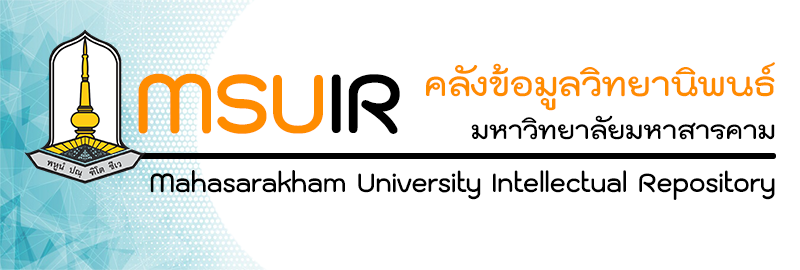Please use this identifier to cite or link to this item:
http://202.28.34.124/dspace/handle123456789/2753Full metadata record
| DC Field | Value | Language |
|---|---|---|
| dc.contributor | Longlong Li | en |
| dc.contributor | Longlong Li | th |
| dc.contributor.advisor | Somkhit Suk-erb | en |
| dc.contributor.advisor | สมคิด สุขเอิบ | th |
| dc.contributor.other | Mahasarakham University | en |
| dc.date.accessioned | 2025-05-07T11:29:53Z | - |
| dc.date.available | 2025-05-07T11:29:53Z | - |
| dc.date.created | 2024 | |
| dc.date.issued | 24/10/2024 | |
| dc.identifier.uri | http://202.28.34.124/dspace/handle123456789/2753 | - |
| dc.description.abstract | As a Buddhist holy place, ShengShui Temple has a long history and rich cultural connotation. The architectural layout and decorative style of the ShengShui Temple embodies the essence of traditional Chinese culture and demonstrates the unique charm of ancient Chinese architectural art. The perceptions and emotions experienced in the ShengShuiTemple in a specific time and space environment, the various spaces as well as the connections between them all present a coordinated and harmonious relationship. The purpose of this study is to analyse the historical and cultural, architectural scale of the Shengshui Temple in time and space in terms of the dual latitudinal changes and the presentation of objects and spaces. The relationship between objects and space is created through the architectural structure, decorative images, and Buddhist statues inside the temple. The Sungsui Temple creates a unique sense of space by utilising the height, shape and location of the building; combining the object with a specific space. This relationship between object and space not only reflects the design ideas of Chinese architecture, but also shows the unique understanding and expression of space in Chinese culture. Through field investigation and literature review, and analysed through qualitative research, the study of Shengshui Temple in Mianyang, China, shows that there is a close connection between time-space and object-space, and that this connection plays an important role in the inheritance and development of culture. As a representative of ancient Chinese architecture, Shengshui Temple demonstrates the value and charm of traditional Chinese culture through its unique way of constructing time and space and presenting objects and space. The innovation of the study is to reveal the special characteristics of Shengshui Temple as an architectural cultural heritage in time and space dimensions, and to explore its practical application value in cultural inheritance and development. This project helps to improve people's understanding of time and space and objects and space through the study of the art of Shengshui Temple | en |
| dc.description.abstract | - | th |
| dc.language.iso | en | |
| dc.publisher | Mahasarakham University | |
| dc.rights | Mahasarakham University | |
| dc.subject | ShengShuiTemple | en |
| dc.subject | Time and Space | en |
| dc.subject | Objects and Space | en |
| dc.subject | Cultura Inheritance and Development | en |
| dc.subject.classification | Arts and Humanities | en |
| dc.subject.classification | Agriculture,forestry and fishing | en |
| dc.title | Shengshui Temple in Mianyang, Sichuan, China:using time and space material culture in qualitative research | en |
| dc.title | วัดชุชูในเมืองมิยางประเทศเสฉวนประเทศจีน: ใช้วัฒนธรรมวัสดุเวลา และอวกาศในการวิจัยเชิงคุณภาพ | th |
| dc.type | Thesis | en |
| dc.type | วิทยานิพนธ์ | th |
| dc.contributor.coadvisor | Somkhit Suk-erb | en |
| dc.contributor.coadvisor | สมคิด สุขเอิบ | th |
| dc.contributor.emailadvisor | somkhit.s@msu.ac.th | |
| dc.contributor.emailcoadvisor | somkhit.s@msu.ac.th | |
| dc.description.degreename | Master of Arts (M.A.) | en |
| dc.description.degreename | ศิลปศาสตรมหาบัณฑิต (ศศ.ม.) | th |
| dc.description.degreelevel | Master's Degree | en |
| dc.description.degreelevel | ปริญญาโท | th |
| dc.description.degreediscipline | สำนักงานเลขา | en |
| dc.description.degreediscipline | สำนักงานเลขา | th |
| Appears in Collections: | Faculty of Fine - Applied Arts and Cultural Science | |
Files in This Item:
| File | Description | Size | Format | |
|---|---|---|---|---|
| 65012451019.pdf | 6.94 MB | Adobe PDF | View/Open |
Items in DSpace are protected by copyright, with all rights reserved, unless otherwise indicated.

